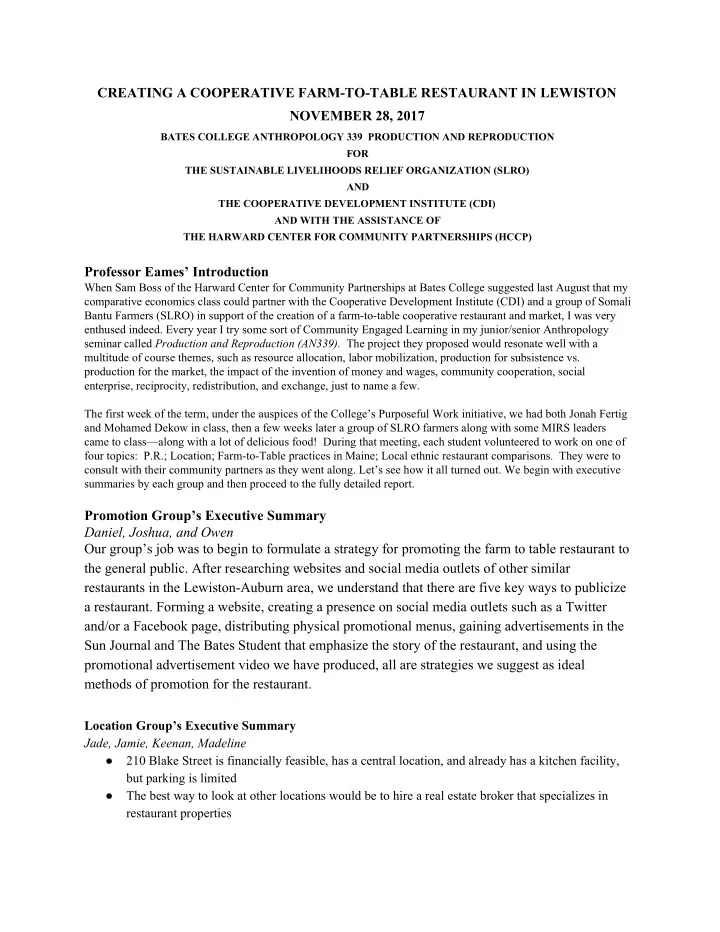

CREATING A COOPERATIVE FARM-TO-TABLE RESTAURANT IN LEWISTON NOVEMBER 28, 2017 BATES COLLEGE ANTHROPOLOGY 339 PRODUCTION AND REPRODUCTION FOR THE SUSTAINABLE LIVELIHOODS RELIEF ORGANIZATION (SLRO) AND THE COOPERATIVE DEVELOPMENT INSTITUTE (CDI) AND WITH THE ASSISTANCE OF THE HARWARD CENTER FOR COMMUNITY PARTNERSHIPS (HCCP) Professor Eames’ Introduction When Sam Boss of the Harward Center for Community Partnerships at Bates College suggested last August that my comparative economics class could partner with the Cooperative Development Institute (CDI) and a group of Somali Bantu Farmers (SLRO) in support of the creation of a farm-to-table cooperative restaurant and market, I was very enthused indeed. Every year I try some sort of Community Engaged Learning in my junior/senior Anthropology seminar called Production and Reproduction (AN339). The project they proposed would resonate well with a multitude of course themes, such as resource allocation, labor mobilization, production for subsistence vs. production for the market, the impact of the invention of money and wages, community cooperation, social enterprise, reciprocity, redistribution, and exchange, just to name a few. The first week of the term, under the auspices of the College’s Purposeful Work initiative, we had both Jonah Fertig and Mohamed Dekow in class, then a few weeks later a group of SLRO farmers along with some MIRS leaders came to class—along with a lot of delicious food! During that meeting, each student volunteered to work on one of four topics: P.R.; Location; Farm-to-Table practices in Maine; Local ethnic restaurant comparisons. They were to consult with their community partners as they went along. Let’s see how it all turned out. We begin with executive summaries by each group and then proceed to the fully detailed report. Promotion Group’s Executive Summary Daniel, Joshua, and Owen Our group’s job was to begin to formulate a strategy for promoting the farm to table restaurant to the general public. After researching websites and social media outlets of other similar restaurants in the Lewiston-Auburn area, we understand that there are five key ways to publicize a restaurant. Forming a website, creating a presence on social media outlets such as a Twitter and/or a Facebook page, distributing physical promotional menus, gaining advertisements in the Sun Journal and The Bates Student that emphasize the story of the restaurant, and using the promotional advertisement video we have produced, all are strategies we suggest as ideal methods of promotion for the restaurant. Location Group’s Executive Summary Jade, Jamie, Keenan, Madeline ● 210 Blake Street is financially feasible, has a central location, and already has a kitchen facility, but parking is limited ● The best way to look at other locations would be to hire a real estate broker that specializes in restaurant properties
Recommend
More recommend